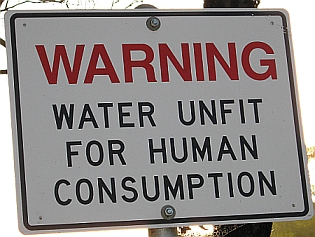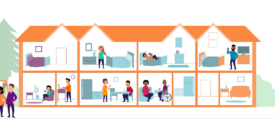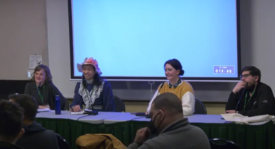Research shows that some words and messages are more effective than others when it comes to defining the problem of polluted stormwater runoff and building support for policy solutions. Sightline has distilled best practices and talking points for lawmakers and stormwater pollution experts. But there are messaging tips here that apply to just about any policy, including explaining why the issue is important for our families and communities and using success stories to show how solutions can work to tackle multiple local priorities.
Thanks to Resource Media for guidance and research on this project.
Who Said It?
 [Curbing toxic runoff] means thousands of good-paying new jobs in our communities on projects like retrofitting urban streets in Bremerton or building storm drains in Puyallup. And it means protecting Puget Sound and other Washington waterways, which are essential to our economy, public health, and quality of life.” —Joan Crooks, Executive Director, Washington Environmental Council
[Curbing toxic runoff] means thousands of good-paying new jobs in our communities on projects like retrofitting urban streets in Bremerton or building storm drains in Puyallup. And it means protecting Puget Sound and other Washington waterways, which are essential to our economy, public health, and quality of life.” —Joan Crooks, Executive Director, Washington Environmental Council
SEE ALSO: Sightline’s new policy primer, Cleaning Up the Northwest’s Toxic Runoff>>
Click here for our full, printable messaging memo (PDF)>>
Key messaging strategies
Tackle diverse community priorities all at once.
Local jurisdictions juggle lots of competing priorities and are faced with increasingly tight budgets. Effective messages point to ways that cleaning up polluted runoff allow communities to address multiple pressing priorities at once, such as flood control—which impacts public safety, property damage and fish stocks; sewage containment; and permit compliance.
Local success stories should be central to our toxic runoff messages.
The Northwest is at the vanguard of effective solutions to curb toxic runoff. Clean water advocates across the region—and the country—look to our success stories as stepping stones in their efforts to strengthen clean water policy and launch cost-effective and practical low-impact development projects. Descriptions and photos of successful implementation in another community make policy proposals come alive.
Talking points
Name the real problem.
“Stormwater” works for insiders but it fails to fully illustrate the problem for everybody else. “Polluted runoff” does the job more vividly—and accurately. “Toxic runoff” also works on a gut level. And when using the term “stormwater,” always qualify it as polluted.
Name names—keep it local and concrete.
Identify specific toxics that contaminate our water, point to their sources, and name the familiar, local waterways where polluted runoff ends up. (Oil from trucks is swept off the 520 Bridge right into Lake Washington where families swim and fish.)
Talk win-win solutions.
Share the good news about solutions, rather than debating the problem. There are plenty of inexpensive ways for communities to stem polluted runoff—fixes that also address other community priorities at the same time, like reducing flooding, making neighborhoods more attractive, and creating local jobs. Local success stories should be central to all our messages about polluted runoff.
Make the human connection.
It’s not just about fish and ecosystems! Polluted runoff contaminates the water our families use and the food we eat. Clean water is a matter of health, safety, and economic vitality for our communities.
Avoid insider jargon and acronyms.
LID—and even “low-impact development”—means little to the non-expert. Try saying: “development done right”—most people understand the idea of building it right the first time so we don’t have the expensive problem of redoing it later.
Stand strong for polluter accountability.
Our communities continually clean up after polluters. Part of the solution to polluted runoff is setting up a system for the producers of hazardous substances to do their fair share.








